Heads Up: New Helmet Design Resists Brain Trauma
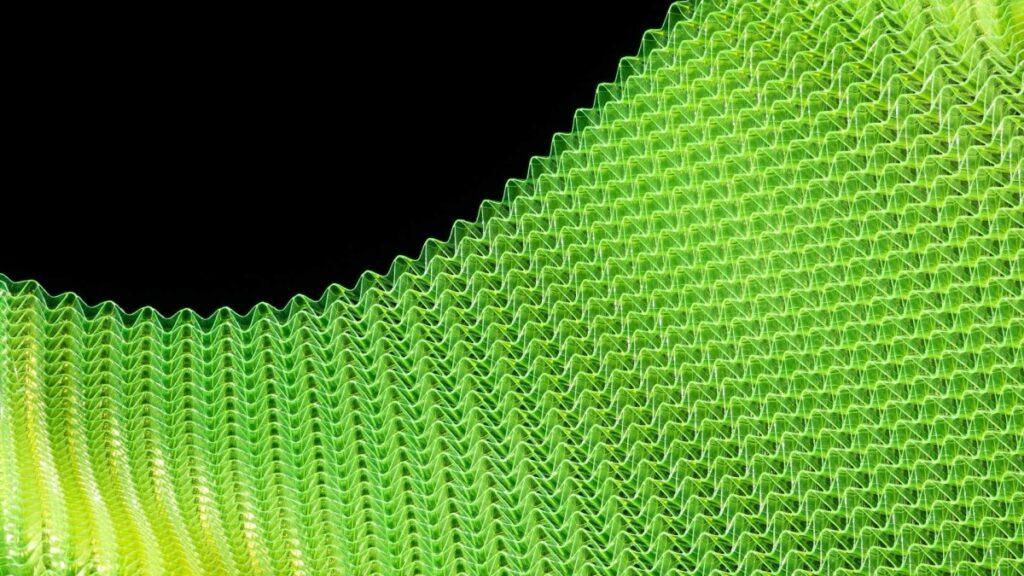
WaveCel helmet technology seeks to reduce the ‘silent epidemic’ of concussive brain trauma
Michael Bottlang and Dr. Steve Madey have a thing against concussions, and they’re tackling the problem head-on.
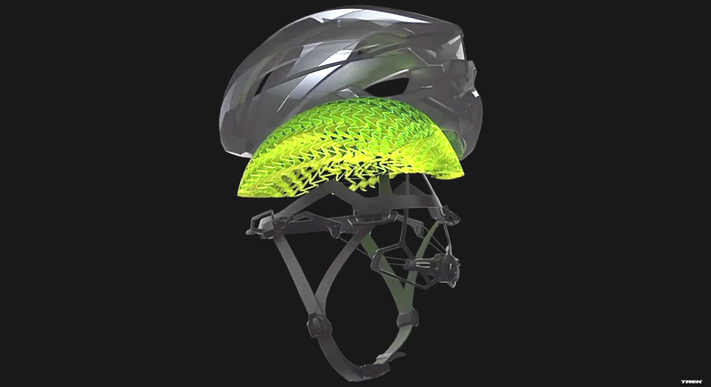
WaveCel introduced its first product, a bicycle helmet, in March 2019. Trek is a major customer.
The company they co-founded in 2014, Wilsonville, Ore.-based WaveCel LLC, consists of surgeons, scientists, engineers and researchers. Together, they say, “We are chasing the safest helmet technology.”
In their eight years of research and testing, they have smashed and crashed more than 3,000 helmets, and continue to declare: “If there’s even a sliver of daylight between where we are and perfection, we’re not done.”
Bottlang, a native of Germany, earned his PhD in biomechanical engineering at the University of Iowa, and has focused his efforts on improving the treatment of orthopedic trauma patients.
Madey, meanwhile, is a board-certified hand and microvascular surgeon who came to Portland after medical school at Columbia University and a residency at the University of Iowa.
Back in 2004, the two began doing research to address unsolved problems, including brain injuries. They co-founded the Legacy Biomechanics Laboratory in Portland, Ore., where they say their efforts produced devices “that have saved hundreds of lives.”
Rotational Force Danger
This is when they realized that helmet technology had not evolved to address the primary cause of brain impact injuries—rotational, rather than linear, force. “That unsolved challenge really triggered our attention,” Bottlang said in a recent telephone interview.
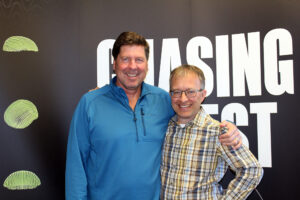
Dr. Steve Madey (left) and Michael Bottlang have been working together to develop WaveCel for the past 15 years.
He refers to brain injuries as “the silent epidemic.” Such trauma can cause disabilities in memory and other aspects of psychological health, with the effects sometimes lingering for many years.
Madey added that “Head injury is the second-leading cause of time loss in the workplace in the United States. That’s a big number, when you think about all the injuries that can occur.” On top of that, he noted, many such injuries go unreported. “There is a staggeringly large number of head injuries in the U.S. every day. Our goal is to drastically reduce that.”
At Legacy Biomechanics, Bottlang oversaw the creation of the Helmet Impact Testing (HIT) Laboratory. The two have now been collaborating for the past 15 years to create WaveCel, a helmet safety system that has proven to be exceptional at mitigating rotational forces that cause brain injury in real-world crashes.
It wasn’t till about 2015 that they first realized the current, three-dimensional cellular solution, which then took a couple more years to fully develop, and to file for intellectual property protection. They now hold international patents and trademarks for WaveCel.
“We developed in the research lab a material that showed clearly superior performance, but we couldn’t find any company that could produce our WaveCel material at scale,” Bottlang said. “So, we literally had to start our own manufacturing plant.”
Funding from the U.S. National Institutes of Health (NIH) helped to support not only the groundbreaking research but also the scale up of production.
Additionally, WaveCel LLC has developed and fabricated all the machines that it uses today to make its product. “That was a very heavy lift,” Bottlang acknowledged, “but now we’re very happy about it because that gives us the expertise to continue to innovate.”
In the same phone interview, Steve Madey stated: “As they say, an ounce of prevention is worth a pound of cure when it comes to the central nervous system. You can’t fix the brain, but you can really mitigate the injury that occurs to the brain.”
The Hydraulic Brain
The brain is encased in a skull—essentially a container. Because it’s filled with fluid, he explains, it actually functions as a hydraulic system. Any pressure you apply to a hydraulic system is equally dispersed throughout the system because of Pascal’s law. (See egg video on website: https://bit.ly/WaveCel_egg_test.)
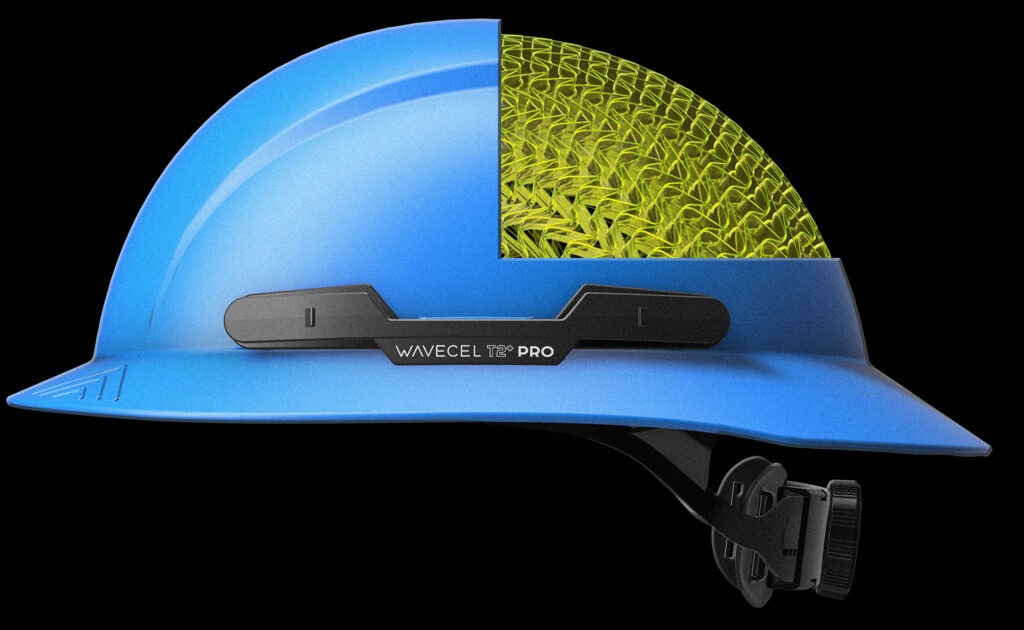
The company is introducing two models of its full-brim hard hats this summer. The construction sector is arguably the largest end market for protective helmets.
The key factor is not how much force is applied. The real issue is how that force causes the rotation of the container, which then starts to spin around the brain. Because there are connections there, it starts to shear or tear the brain. That’s how a concussion occurs.
What’s not intuitive is that it doesn’t take a lot of spin to the skull to cause damage. Even movement of just a centimeter in several milliseconds is a huge amount of displacement for the brain.
“Helmets have always been designed to reduce the force,” Madey noted. “But they were never really designed to try to break the moment. So, we set out to develop a construct that would absorb as much force as possible but also break the resulting force’s ability to create that moment. That’s really the genesis of WaveCel.”
The material is really good at absorbing straight force—you can stand on it and jump on it and it’ll start to crumple a little bit. But as soon as you come into it at an angle, it starts to break on itself, and it doesn’t lose its ability to absorb that liner force. That’s the subtlety of WaveCel and why it’s so powerful.
The WaveCel product comprises a specially designed liner that fits inside the helmet’s hard shell. It behaves like a network of hundreds of interconnected shock absorbers connecting the head and the outer shell of the helmet. It distributes the impact energy through its network of cells, absorbing impact forces like the crumple zone of a car.
Regardless of the direction of impact, the WaveCel insert distributes and diffuses the crash energy by flexing, crumpling and gliding, with polymer technology playing a vital role. The aim, explained Bottlang, is to seamlessly distribute the crash force from the site of impact throughout the matrix of cells to absorb energy and to dampen the impact to the head.
WaveCel is said to absorb up to 73 percent more rotational force than standard helmet lining, according to a 2019 accident analysis and prevention study cited on the company’s website. And the insert itself consists of just 7 percent material and 93 percent air, since being lightweight and breathable is essential for comfort if one needs to wear a helmet all day.
In-House Manufacture
The WaveCel insert “is something we make in-house, so we have full control of it,” Bottlang said. “It’s a unique manufacturing process. It’s not a honeycomb at all; it’s a three-dimensional cellular structure where the middle of each cell has a pleat in it.”
This feature is critical because typical honeycomb structures cannot fold and shear. WaveCel is designed to fold and shear, which distributes and diffuses the crash energy, thereby mitigating rotational forces. This allows the cells to actually fall over onto their sides, if necessary.
“Our design is one of the very few geometric structures that has a negative Poisson ratio,” Bottlang remarked. (Poisson’s ratio measures the deformation in a material in a direction perpendicular to the direction of the applied force.) For example, if you compress the top of WaveCel, it compresses on the sides, as well.
“It’s very counter-intuitive, but you really need that property to form a cellular structure into a spherical shape without distorting your cells.”
To accomplish this, “we had to design a whole new manufacturing process.” He described the size of one of its manufacturing machines as “filling a living room.” The raw WaveCel material also needs three or four post-processing steps to get it to the exact dimension. “We need to be able to reproduce it in a thickness to within one-tenth of a millimeter. And all of this is done to a cost point to enable us to compete with other, higher-end helmets.”
Madey noted how challenging the inserts are to make. “Michael has to be credited with the ability to figure out a finicky structure and make it the same exact way every time. It’s kind of like the secret tomato sauce from the Italian grandmother.”
Plastics honeycomb inserts typically are made from materials such as polypropylene or glycol-modified PET (PETG). But WaveCel uses a specific—and undisclosed—thermoplastic copolymer with a broad temperature range, to avoid shrinkage of the material even if, for example, it’s left in a car on a hot day. It also does not become brittle in the cold, such as when used in ski helmets.
The resin is thermoformable, said Bottlang, adding that WaveCel sources all its raw materials from the U.S. Despite supply-chain challenges, he said this domestic sourcing strategy helped the company to fulfill all its orders, even at the height of the COVID-19 pandemic.
Bottlang described his company initially as “an ingredient maker.” WaveCel makes the inserts for bicycle and snow helmets, but then ships its products to Asia to be assembled with the shells that are made there, for firms such as Trek (for bicycling) or Burton (for skiing).
WaveCel launched its first bicycle helmet in March 2019 and its first snow and ski models in the winter of 2021. Right now, the company produces 5,000 inserts per day at its 55,000-square-foot plant in Oregon. The plant currently is running at maximum capacity but has room to expand significantly. Bottlang noted that the beauty of having designed its own manufacturing machines in-house is that the firm has no challenge in scaling its production facility to meet growing demand.
Redesigning Hard Hats
The company is pursuing a different approach for its newest product line—hard hats for the construction industry. It is manufacturing these products entirely in the U.S., for the U.S., Bottlang noted. All the work is done in the greater Portland area.
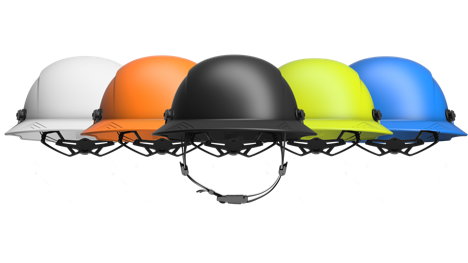
‘Hard hats, welcome to the 21st century,’ WaveCel declares in marketing materials. This colorful array shows a new type of protective head gear for the construction sector.
“Our construction hard hats have been very well received so far,” he said, “because they are comfortable and lightweight and much lower in profile than traditional products, which tend to have large air spaces between the liner and shell. We fill that air space with WaveCel, which allows them to be much more low profile, which is useful when operating in tight spaces.”
Many traditional hard hats have shells molded from polycarbonate, or PC/ABS blends, or even high-density PE, but WaveCel uses lightweight ABS for its hard-hat shells.
Bottlang said most hard hats today meet ANSI standard Type 1 for helmets, which measures for protection against something dropping from above on a worker’s head but does little to protect against lateral impacts. There also is a Type 2 ANSI standard, which involves much more stringent testing and so is more effective against lateral blows, which he says is the more common type of impact. WaveCel lines the entire inside of the shell, providing 360-degree protection.
Madey said that WaveCel plans to initially release two models of its new, full-brim hard hats on June 1 in the U.S. He said they opted for the full brim because it is traditional and more widely accepted in the construction industry than some of the newer versions of helmets now being offered. Those latter models are called safety or climbing-style helmets, and Madey suggests those designs have received mixed reviews in that user community.
The WaveCel-branded hard hats will hit the market at price points of $169 and $189, which is within the existing range for such products. “We have a saying at WaveCel,” Madey said: “If you have a $20 brain, you should wear a $20 helmet.” The helmets come in two colors: smoke gray and high-visibility yellow.
Swedish Competitor
Madey and Bottlang acknowledged that others, such as Sweden’s MIPS AB, are also working to address the issue of concussions via competing technologies. MIPS is an acronym for Multi-Directional Impact Protection System. The patented technology was created in 2001 by members of the Royal Institute of Technology and the Karolinska Institute in Stockholm.
MIPS technology mimics the brain’s protective structure by reducing rotational forces caused by angled impacts to the head. The helmet’s shell and liner are separated by a low-friction layer that allows the helmet to slide, noticeably reducing trauma to the brain in the case of oblique impacts. MIPS uses two plastics pieces that form slip liners inside the helmet and slip over each other during impact.
MIPS, which launched commercially in 2007, has sold more than 30 million of its safety systems to over 140 helmet brands since then, including some 12 million units just in 2021, according to the firm’s website.
But Madey said that their research indicates WaveCel is more effective at “breaking that moment” of rotational force, especially at very high levels of impact.
Developing WaveCel was “a long, long journey” to create a product that was affordable and could be mass-produced. The efforts are beginning to pay additional dividends as others begin to notice the company. Last year, TIME magazine named Trek’s new Bontrager WaveCel helmet as one of the 100 Best Inventions of 2020 (https://bit.ly/TIMEsBest100).
Potential Markets
Theoretically, Madey noted, WaveCel could be used in many other types of applications that require cushioning, such as knee pads or elbow pads, but the product is specifically designed to protect the head. So, he says, “I don’t really care to be in any products outside of the helmet world. But in the helmet world, I think we make an incredibly tremendous difference.”
There is, however, another high-profile helmet market that is not in his sights. The National Football League has been in the headlines for years, due to player safety concerns over concussions. But WaveCel has consciously chosen to avoid the football helmet market. That sector “is the smallest market you can think of, with the most liability,” Madey said. While the technology certainly would work in that application, it would require some modifications.
“Our helmet is designed to plastically deform, so that it burns as much energy as possible, like the front end of your car.” Football wants a repeatable-hit helmet that reduces the forces and the rotation to some degree, but such helmets can’t maximally reduce that force unless it plastically deforms. And teams don’t want to be replacing helmets after every significant hit.
When assessing sales potential, Madey noted that the global construction market is 300 million units a year. The bicycle market is 35 million units a year, the motorcycle market is about 25 million units annually—and then demand precipitously drops off after that.
“Snow and ski are much smaller, but it’s a high-visibility market,” he said, “and Burton is a good brand to be aligned with. Same with Trek in the bicycle sector. Those relationships have been good for our brand.”
Military Applications
Military helmets also could be a good potential application, since space constraints are important, as is the aim to maximize the mitigation of linear rotational forces.
Madey added: “I know that the military spent billions on trying to mitigate concussive forces that soldiers would see in the field, and they never got anywhere.” The main reason, he suggested, is that they missed the mark that the head doesn’t really get concussed by the wave traveling through your brain. Rather, the concussive wave puts a moment onto the skull that creates the rotation that helmets are not optimized to deflect.
“I’d love to be [selling to] the military,” he acknowledged. “We’ve engaged with them several times. I think we’ll break into that space eventually, but I don’t want to sit there and lobby them constantly when we can just make helmets and sell them to [consumers in] the United States.”
For the time being, WaveCel has its hands full with its current customer base. It’s just starting the commercial roll-out of products to the construction sector. “There will be a ramp-up period and then we need to temper our growth,” Madey said. “It has to be smart. That’s going to be the next challenge for us.”
